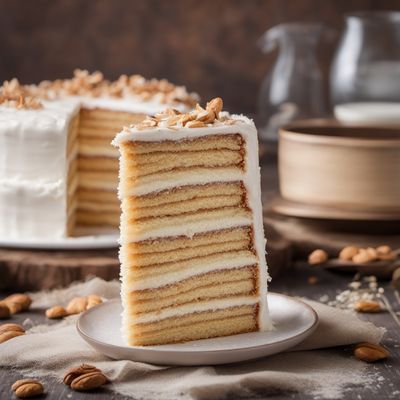
Ingredient
Flowers or parts of flower used as spices or similar
Petals of Flavor: Exploring the Culinary World of Edible Flowers
Edible flowers encompass a wide variety of blooms, including petals, buds, and even whole flowers, that are used as spices or similar in cooking. These floral ingredients come in an array of colors, shapes, and sizes, each with its own distinct taste and texture. From the subtle sweetness of rose petals to the peppery kick of nasturtiums, edible flowers offer a range of flavors that can enhance both savory and sweet dishes. Their delicate and often fragile nature adds a visually stunning element to salads, desserts, cocktails, and more.
Origins and history
The use of flowers in culinary practices dates back centuries and can be traced to various cultures around the world. In ancient Rome, for example, roses were used to flavor food and drinks, while in Asian cuisines, chrysanthemums and lotus flowers have been incorporated into traditional dishes for their symbolic and medicinal properties. Edible flowers have also been a part of Middle Eastern and Indian cuisines for centuries, with ingredients like saffron and rosewater being widely used. Today, the use of edible flowers has gained popularity globally, with chefs and food enthusiasts embracing their beauty and unique flavors.
Nutritional information
Edible flowers are not only visually appealing but also offer nutritional benefits. They are often rich in antioxidants, vitamins, and minerals, depending on the specific flower. While the nutritional content varies, edible flowers can provide a colorful addition to a well-balanced diet.
Allergens
Some individuals may have allergies to specific flowers, so it is important to exercise caution and be aware of any potential allergic reactions when consuming edible flowers.
How to select
When selecting edible flowers, look for those that are organically grown and free from pesticides or other chemicals. Choose flowers that are fresh, vibrant in color, and free from wilting or browning. It is also essential to ensure that the flowers are intended for culinary use and have not been treated with any harmful substances.
Storage recommendations
To maintain the freshness and quality of edible flowers, store them in a cool, dry place. Gently wrap them in a damp paper towel and place them in an airtight container or plastic bag. Properly stored, edible flowers can last for a few days to a week.
How to produce
Growing edible flowers can be a rewarding experience for amateur gardeners. Many varieties can be easily cultivated in home gardens or even in pots on balconies or windowsills. Research the specific flower you wish to grow and follow the recommended planting and care instructions for optimal results.
Preparation tips
Before using edible flowers, gently rinse them under cold water to remove any dirt or insects. Pat them dry with a paper towel and remove any green parts or sepals, as they can be bitter. Edible flowers can be used whole or as individual petals, depending on the desired presentation. They are often used as garnishes, infused into syrups or oils, or incorporated into salads, desserts, and beverages. Remember to use edible flowers sparingly, as their flavors can be potent.
Culinary uses
Edible flowers are commonly used as garnishes to add a visually stunning element to dishes. They can be sprinkled over salads, soups, or desserts to provide a pop of color and a delicate floral flavor. Edible flowers can also be infused into syrups, vinegars, or oils to add a subtle floral essence to dressings, marinades, or cocktails. Additionally, certain flowers like lavender or hibiscus can be brewed into teas or used to flavor baked goods.
Availability
Edible flowers are commonly available in regions with a diverse culinary culture, such as Europe, Asia, and the Americas. They can often be found at specialty grocery stores, farmers markets, or through online suppliers.


